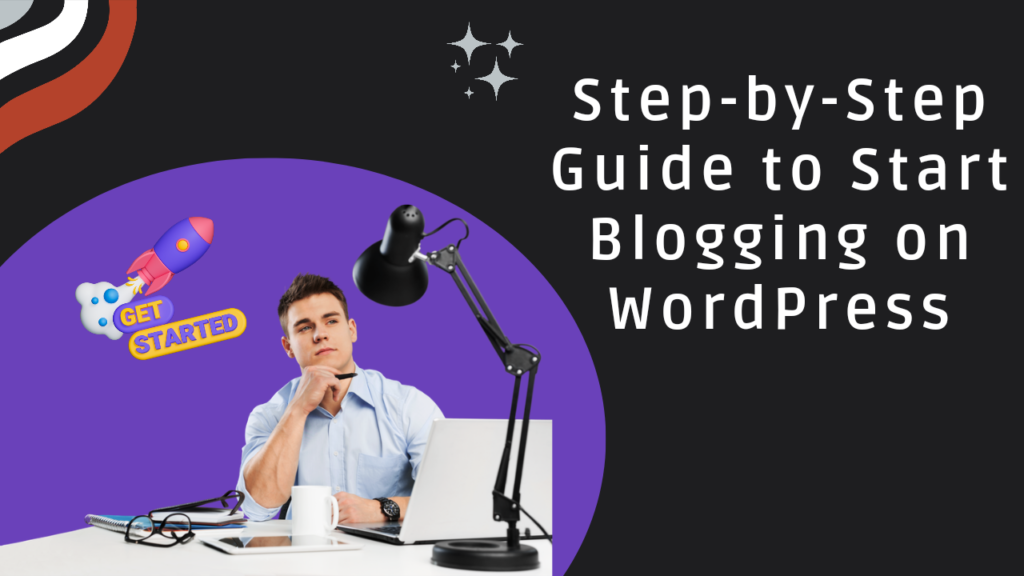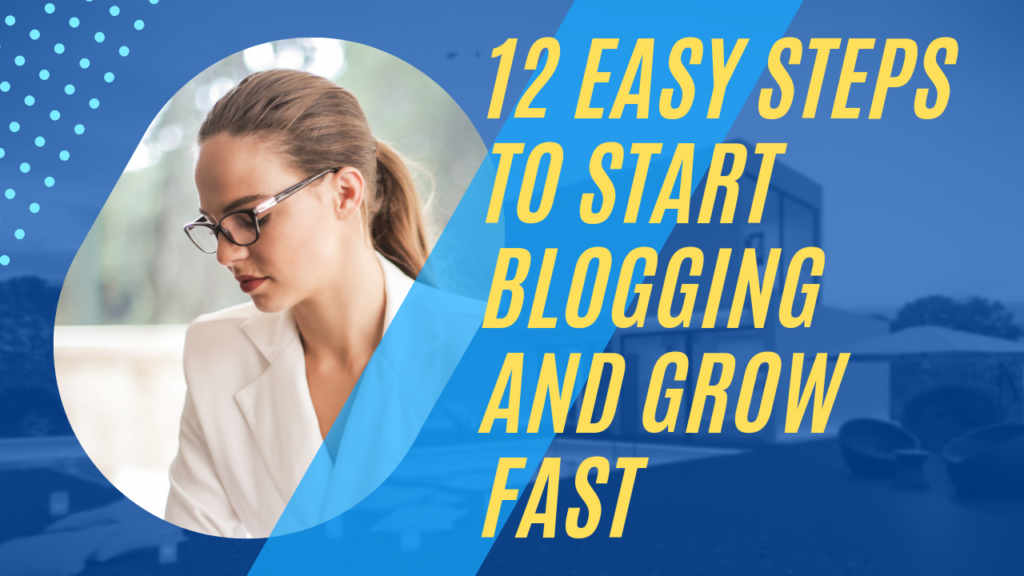Amir: IF You’re Beginner I Suggest You to Take a Look on How To Start A Blog After this Tutorial!
Start Blogging on WordPress
Dear Blogger,
It is very overwhelming at first to begin with a blog, but you can set up your blog quite easily by following some proper guidance and thereafter express your ideas to the whole world.
WordPress is still one of the most favored platforms for blogging; with a power share of 40% of all global websites.
Flexibility, usability, and the possibility of multiple and endless customization options make this site ideal for all new beginners and professionals alike.
In this WordPress blogging tutorial, I will take you by the hand through every step you are to follow to start using WordPress for blogging. This guide will take care of everything from understanding the reasons why WordPress is vital to setting up your blog and writing your first entry, so you hit the ground running.
Why Blog on WordPress?
Let us first talk about why WordPress is the most-used blogging platform before moving to the blog setup in WordPress:
- User-Friendly Interface: One doesn’t need technical knowledge to start off with WordPress for blogging. Its dashboard is highly intuitive and apt for a beginner.
- Customization: WordPress provides thousands of themes and plugins to build a blog according to one’s needs and preferences.
- SEO-Friendly: Through Yoast SEO plugins, you make your blog SEO-friendly with minimal knowledge.
- Scalability: WordPress can handle small, casual writers to larger professional brands.
- Community Support: When you use WordPress, finding a tutorial or solution would be easy due to its extensive developer community.
A W3Techs case study demonstrated how WordPress leads the market for CMS usage by possessing 63.6%.
Step 1: Choose Your Blog Niche
Every successful blog starts with a niche—a topic you’re passionate about and knowledgeable in. Selecting a niche ensures that your blog targets a specific audience and builds authority.
Tips for Choosing a Niche:
- Pick something you’re genuinely interested in.
- Research your target audience to understand their needs.
- Ensure the niche has long-term potential.
Check out my post on Choosing Your Blog Niche to dive deeper into this topic.
Step 2: Pick a Domain Name and Hosting
Your domain name is the address of your blog on the internet. Select something memorable, relevant, and easy to spell. Hosting is the service that keeps your blog accessible online.
Steps to Set Up Your Domain and Hosting:
- Host your website via a web service like Bluehost or SiteGround.
- Register your domain name e.g. myamazingblog.com.
- Choose a hosting plan depending on your budget and estimates for traffic.
WordPress.org finds that Bluehost is recommended for new WordPress users mainly because it offers a fairly inexpensive service to get the most basic WordPress site up-and-running quickly with an amazingly easy setup process.
Step 3: Install WordPress
To Install WordPress:
- Login into your hosting dashboard.
- Look for “Install WordPress” option and click on it.
- Enter all the details like site name and admin credentials.
- Complete the installation and log in to your WordPress dashboard.
And so begins your path to starting blogging on WordPress!
Step 4: Choose and Customize Your Theme
Your theme is what makes your blog look like, well, a blog. WordPress has free and premium themes for nearly every niche.

How to Customize Your Theme:
- Go to the WordPress dashboard and click on “Appearance” > “Themes.”
- Browse through the options or upload a premium theme.
- Use the “Customize” option to make changes to colors, fonts, and layout.
Pick a theme that aligns with your niche and keeps the design simple for better readability.
Step 5: Install Essential Plugins
Plugins extend the functionality of your WordPress blog. Here are a few must-have plugins for beginners:
- Yoast SEO: Optimize your blog for search engines.
- WPForms: Add contact forms easily.
- Jetpack: Boost site security and performance.
- Elementor: Customize your site with a drag-and-drop builder.
- UpdraftPlus: Backup your site regularly.
These are must-haves in every WordPress blogging guide because they enhance the performance and user experience of your site.
Step 6: Plan and Create Your Content
Content is the heart of your blog. Planning your posts ensures consistency and relevance.
Beginner Blogging Steps for Content Creation:
- Begin with cornerstone content—those articles that define your niche.
- Use keyword research tools like Google Keyword Planner to find popular topics.
- Write interesting, easy-to-read posts with clear headings and short paragraphs.
Pro Tip: Use internal links to connect related posts. For instance, link to my article on How to Write High-Quality Content.
Step 7: Optimize Your Blog for SEO
If You want to learn in hindi/Urda! THE BLOG/SEO Goat is Here Below:
SEO ensures your blog ranks higher in search engine results, so more organic traffic will come to your site.
How to Start a Blog with SEO in Mind:
- Install an SEO plugin like Yoast SEO.
- Optimize meta descriptions, title tags, and headers.
- Use focus keywords like ” WordPress blog setup” naturally in your content.
- Alt text for images will improve accessibility and SEO.
Step 8: Share Your Blog
Once your blog is up, it is necessary to promote it so that people will find it. Make use of social media, email marketing, and guest posting to spread the word.
Promotion of WordPress Blogs
- Share posts on Facebook, Pinterest, and LinkedIn.
- Connect with blogging communities to network and share your content.
- Leverage your previous blog posts to promote new ones by linking them internally.
For more on this, check out Your Blog Promotion Checklist.
Step 9: Analyze and Improve
Publishing your first post does not mark the end of your blogging journey. The only way to sustain it for the long haul is by constantly analyzing and improving.
Getting Started with Blogging for Performance:
- Monitor your traffic and your bounce rate with Google Analytics, including any user behavior.
- Use your statistics findings to make improvements.
- Try content forms, like videos or infographics.
Starting a WordPress blog looks like a daunting task at first, but if broken down into smaller tasks, it can be done by anyone. Using this WordPress blogging guide will set up a visually beautiful blog with an emphasis on growth optimization. For those willing to go further, check out my other guides here:
- How to Improve Blog Readability
- Maximize Organic Traffic with On-Page SEO
- How to Add FAQ Schema in WordPress.
Remember that for Blogger, your great blog must start with just one post. So go ahead and let your WordPress journey now begin!
What is WordPress, and why is it a good platform for blogging?
WordPress is a powerful content management system (CMS) that allows users to create and manage websites easily. It is ideal for blogging because it offers:
1.A user-friendly interface for beginners.
2.Extensive customization options with thousands of themes and plugins.
3.SEO-friendly tools to help your blog rank higher in search results.
A supportive community for troubleshooting and learning.
How do I choose the best hosting for my WordPress blog?
Choosing the best hosting depends on your budget, expected traffic, and feature needs. Look for hosting providers that offer:
1.Fast load speeds and reliable uptime.
2.Easy WordPress installation.
3.Good customer support.
4.Affordable pricing for beginners.
Some popular hosting services include Bluehost, SiteGround, and Hostinger.
Do I need coding skills to create a WordPress blog?
No, you don’t need coding skills to create a WordPress blog. The platform is designed for beginners and offers drag-and-drop builders, customizable themes, and plugins that handle complex functionalities. However, learning basic HTML or CSS can help with advanced customization.
What plugins are essential for a new WordPress blog?
Rank Math SEO or Yoast SEO: For optimizing content for search engines.
WPForms: To create contact forms easily.
Jetpack: For security and performance enhancements.
MonsterInsights: For tracking website analytics.
UpdraftPlus: For regular website backups.
How can I monetize my WordPress blog?
You can monetize your blog through various methods:
Advertising: Display ads using Google AdSense or similar programs.
Affiliate Marketing: Promote products and earn a commission for referrals.
Sponsored Content: Collaborate with brands to write paid posts.
Selling Digital Products: Offer e-books, courses, or templates.
Memberships: Create premium content for subscribers.
Focus on building traffic and providing value to readers before monetizing.




